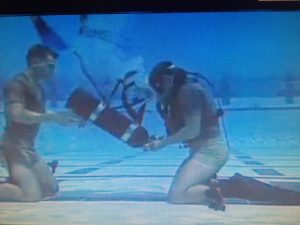What is Basic Underwater Demolition SEAL (BUD/S) training and what happens during the first phase, hell week, second phase, and third phase of BUD/S? Where is BUD/S training? This rigorous program is designed to push aspiring Navy SEALs to their physical and mental limits. This blog will look into the specifics of each stage in depth.
BUD/S training is 23 weeks and comprised in three phases and takes place in Coronado CA. But don’t be fooled by the beauty on the island that hosts the resort Hotel Del Coronado. It’s also known as the starting place for the world’s toughest training.
The first phase focuses on basic conditioning through challenging exercises such as running dunes and carrying heavy logs over long distances. The last week of the first phase is the infamous Hell Week that pushes trainees beyond their limits by subjecting them to sleep deprivation and cold exposure challenges. Following Hell Week comes the second phase which concentrates on combat diving training; here trainees learn underwater demolition techniques along with closed-circuit rebreather use for stealth operations.
The third phase involves land-warfare training where recruits are taught various demolition techniques as well as reconnaissance tactics for effective operations. Throughout these phases, instructors play a crucial role in shaping future SEALs; some have positive impacts while others present harsh challenges that must be overcome.

BUD/S First Phase
The first phase of BUD/S lasts seven weeks and focuses on building strength and endurance through intense workouts such as running sand dunes and carrying heavy logs over long distances.
Running in soft sand requires more effort than on solid ground, making it an effective way to increase overall stamina.
Trainees work together in teams to carry a large wooden log weighing several hundred pounds across various terrains, teaching teamwork, communication skills, and mental toughness.
BUD/S training pushes candidates beyond their limits both physically and mentally, developing a strong foundation for their careers as elite warriors.
Hell Week – 5 1/2 Days Of Physical Pain Until Your Body Becomes Numb
Hell Week is a notorious part of BUD/S training that takes place toward the end of basic conditioning.
This grueling test pushes trainees beyond their mental and physical limits through five-and-a-half days of continuous, intense exercise.
The challenges faced during Hell Week include:
- Sleep deprivation: Trainees get only a few hours of sleep throughout the entire week, testing their ability to function under extreme fatigue.
- Cold exposure: Candidates endure cold water immersions known as “surf torture,” where they must link arms and lie down in freezing ocean waves for extended periods. (source)
- Mudflats: In this punishing activity, trainees crawl through thick mud while being blasted with high-pressure hoses by instructors.
- Around-the-clock physical training (PT): Throughout Hell Week, candidates participate in non-stop PT sessions involving running, swimming, calisthenics, log carries, and more.
About half of the BUD/S class typically drops out or is removed due to injury during Hell Week.
Those who make it past this point have proven their resilience and determination – essential qualities for becoming a Navy SEAL.
To learn more about what it takes to survive Hell Week and other aspects of BUD/S training, check out former Navy SEAL Brandon Webb’s book “The Making Of A Navy SEAL: My Story Of Surviving The Toughest Challenge And Training The Best.” (source)
BUD/S Combat Diving Training: The Second Phase
During the seven-week second phase of BUD/S training, Navy SEAL recruits learn essential underwater demolition techniques and scuba diving skills using closed-circuit rebreathers for stealth operations.
Underwater Demolition Techniques
- Limpet mine placement: Attach explosive devices to enemy vessels or structures underwater.
- Blast calculations: Determine the appropriate amount of explosives needed based on specific targets and conditions.
- Diver navigation: Navigate accurately while submerged, even in low visibility situations.
Closed-circuit rebreathers recycle exhaled air, allowing divers to remain undetected during covert missions due to a lack of visible bubbles. During this phase of BUD/S training, students participate in both pool exercises and open water dives where they hone their skills using these specialized devices. Mastering underwater demolition techniques and utilizing advanced equipment like closed-circuit rebreathers prepares Navy SEAL recruits for the demanding missions they’ll face as members of this elite fighting force.

BUD/S Third Phase – Land-Warfare Training
In the third phase of BUD/S, trainees learn essential skills for operating effectively in various environments, including live-fire exercises and military explosives training. SEAL candidates are taught various demolition techniques, including handling military explosives like C-4 and TNT, setting up charges, and detonating them safely. Trainees learn reconnaissance methods such as stealth movement, covert observation, intelligence gathering, and small-unit patrolling to infiltrate enemy territory undetected and gather valuable information before executing an operation.
- Stealth Movement: Move silently through various terrains without being detected by the enemy.
- Covert Observation: Spot potential threats or valuable intel from afar while remaining hidden.
- Intelligence Gathering: Collect actionable intelligence from various sources, such as local informants or intercepted communications.
- Small-Unit Patrolling: Maintain security and achieve mission objectives while operating in small teams.
Instructors’ Lasting Impact on SEAL Trainees
- Motivation: Relaxed instructors can boost morale and encourage trainees to push through difficult challenges.
- Effective teaching: They often have unique ways of imparting knowledge that make lessons memorable and engaging for trainees.
- Lasting bonds: Many former SEALs remember these types of instructors fondly and credit them with helping shape their careers in the Navy.
- Fear factor: Harsh instructors may instill fear in trainees, making it harder for them to focus on learning essential skills during training. Mental exhaustion will trigger many trainees to ring out – or quit – by duplicating real wartime situations where quitting is not an option.
- Burnout risk: The constant pressure from demanding trainers can lead some recruits to become overwhelmed or even quit before completing the program.
- Reduced teamwork: An overly aggressive instructor may inadvertently hinder the development of camaraderie and trust among trainees, which is crucial for success in the field.
Despite these challenges, many SEALs acknowledge that their instructors’ tough love ultimately helped them develop the mental fortitude and resilience necessary to succeed in this elite fighting force.
Bottom-line:
BUD/S takes place in Coronado CA and is designed to push Navy SEAL recruits beyond their limits with intense physical and mental challenges. BUD/S is a volunteer in and volunteer out process. Meaning trainees can quit or ring the brass bell anytime.
The first phase focuses on building strength and endurance through activities like running sand dunes and carrying heavy logs, while Hell Week tests trainees’ mental toughness with sleep deprivation and cold exposure challenges.
The second phase teaches combat diving techniques, and the third phase focuses on land-warfare training, with instructors playing a crucial role in shaping the experience of trainees, both positively and negatively.
After completing BUD/S, recruits must undergo a six-month probationary period before earning the prestigious SEAL Naval Enlisted Classification Code, making it clear that becoming a Navy SEAL is not for the faint of heart.
But for those who have what it takes, the rewards are immeasurable, with the opportunity to serve their country at the highest level and be part of an elite brotherhood.
